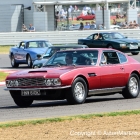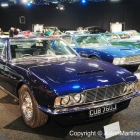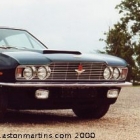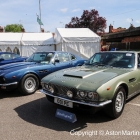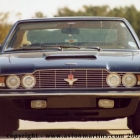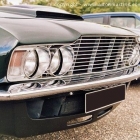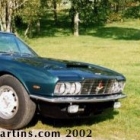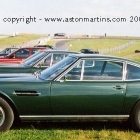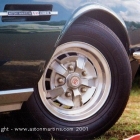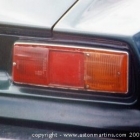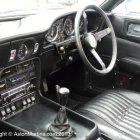One of the few external differences from the six cylinder model is the larger front air dam. Another distinguishing feature of the V8 are the alloy wheels, the wire wheels could never handle the mighty torque of the engine. One must remember that a certain six cylinder car also had alloy wheels and DBS V8 badges. The gold car (BS1) as driven by Roger Moore in the series The Persuaders. So that it appeared that Roger was driving the recently unveiled car, the DBS was modified just for filming even though the V8 was already then available. Demand for the new car was so great that all production cars were allocated to eager buyers and AML could not spare a single one for the TV programme.
The 5340cc V8 engine, initially fitted with Bosch fuel injection, was powerful enough to propel the car to almost 160mph; and 0 to 60mph in 5.9 seconds. Power outputs were not quoted but was probably around 310 to 320bhp. At the time this was one of the fastest production cars in the world.
The side profile of a DBSV8 shows clearly the coke bottle shape of the rear. The tail lights are from the humble Hillman Hunter. The DBSV8 (once retrospectively known by the AMOC as the Series 1), built between April 1970 and May 1972 managed 402 examples before being replaced by the restyled AM V8 (Bosch f.i. or Series 2).




